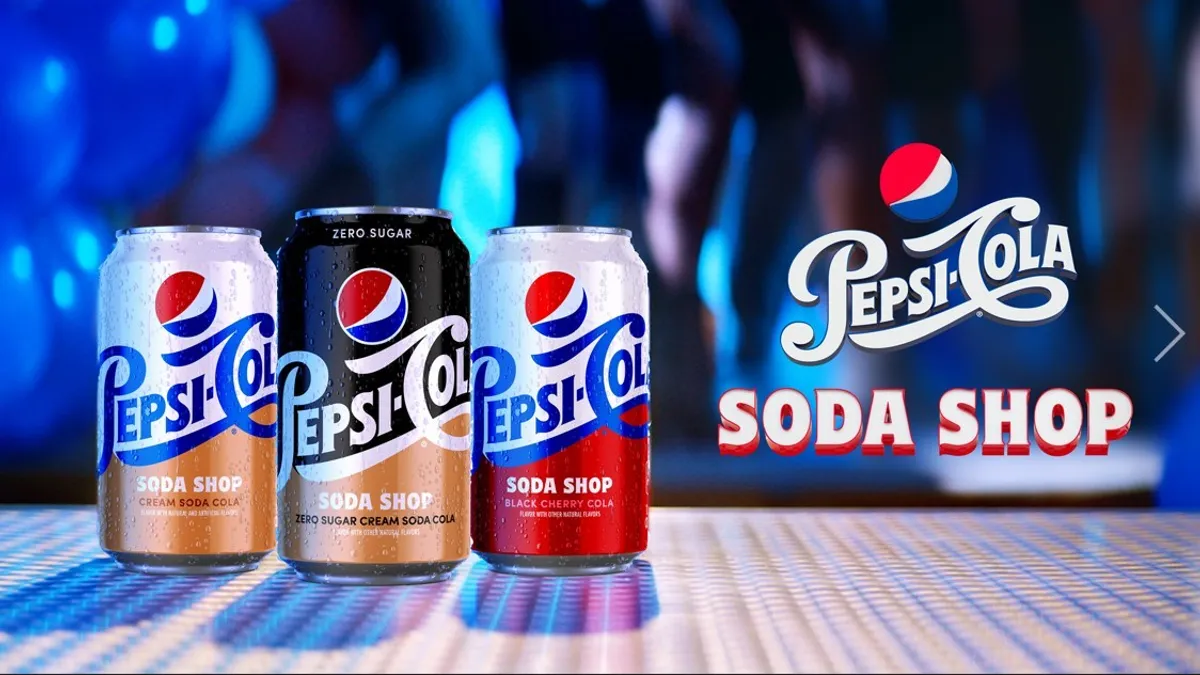NEW YORK — Media fragmentation is a frequent topic at Advertising Week New York, an annual conference where industry professionals gather to get a pulse on what’s new. With the meteoric rise of the metaverse, TikTok and streaming TV during the pandemic, that theme has been particularly pronounced this year. For marketers, the challenge is not just being spread thin by a multitude of options, but also acclimating to nascent channels where traditional ads are less impactful or even outright rejected.
“Paid media is not where consumers are always spending their time,” said Todd Kaplan, CMO of Pepsi, during an interview on-site at the conference Tuesday.
“It's a double-edged sword. It's the best of times for marketers because there are so many new and exciting platforms and ways to reach and engage with consumers,” Kaplan added. “But it's also really challenging to reach consumers through all those platforms because each has different formats, different needs, different content rules.”
For a brand whose history stretches back to the earliest days of mass media, Pepsi has occasionally been roiled by such shifts and an age where social media can make or break a campaign’s reception. At the same time, the soft drink marketer has tried its hand at a number of concepts that Kaplan positions as “opt-in”: authentically engaging versus coming off as a “swarm of bees” trying to catch a consumer’s attention. The company vet, who’s been with Pepsi for over 16 years, was also critical of purely transactional messaging, stating he tries to approach marketing from the end-user perspective.
“If you think of your own life as a consumer and the amount of messages you receive and see and experience throughout an entire day, it's overwhelming,” said Kaplan. “You need to nuance how your brand manifests. It all starts with knowing your brand point of view and how you show up in culture.”
Standout Pepsi projects in recent years include a feature-length film with theatrical distribution; a Showtime documentary; a branded reality show; and music videos with top artists like Doja Cat and, most recently, Chlöe. The singer features in a reimaged version of “Footloose” that launched in October and draws on a viral TikTok trend.
While a paid strategy can help spread the word for these efforts, Kaplan said he believes generating organic online chatter and earned media is still undervalued among marketers and stands as the true mark of an impact. The marketing outlook is justified on the growth front: Pepsi parent PepsiCo last week raised its full-year guidance despite a challenging macroeconomic environment where consumers feel pinched by inflation.
“We're really focused right now on driving frequency with our core consumers,” Kaplan said. “As you look across cohorts and platforms, we want to be there. But we've really moved the needle on making sure our core consumers are well tended to.”
Hard choices
Pepsi has adjusted its media focus in other ways so far in 2022. Earlier this year, it ended its run as presenting sponsor of the Super Bowl Halftime Show, a crown jewel of sports broadcasting where it’s received accolades over the past decade. The brand preserves a relationship with the NFL.
At the macro level, media fragmentation has pushed the marketer to be more “choiceful,” per Kaplan, and, dependent on the channel and campaign, less precious about its brand.
“Obviously, you can't be everywhere and everything to everyone,” Kaplan told Marketing Dive, echoing comments made by Domino’s executives earlier at the conference. “You have limited resources and budget that you've got to spread throughout those things and limited creative.”
There are a few clear places where Pepsi is moving to shore up a foothold. TikTok is a major target, not only through programs like the “Footloose” ads with Chlöe, but also a push behind a new Pepsi Nitro offering that centers on Khaby Lame, one of the app’s most popular creators. The nitro-infused beverage, which mimics the way drinks like Guinness are poured, is aimed at the same younger crowd that’s made the viral video app into a sensation.
Other newcomer channels are getting the wait-and-see approach. The metaverse has been a recurring topic at Advertising Week, but Kaplan thinks of it as a “fat word” that’s yet to be tangibly realized. Still, the promise is there.
“Everything's in the metaverse. I would say, right now, the metaverse in that way doesn't really fully exist yet,” Kaplan told a crowd during a panel later in the afternoon.
“What's more interesting is all the kind of fundamental technology that's under the hood,” he added, referencing blockchain, nonfungible tokens (NFTs) and other staples of Web3.
Pepsi last year dropped its first NFTs, a collection of thousands inspired by its history with music. The Mic Drop release also attracted the types of scam artists common to the digital collectibles space, pointing to some of the pitfalls of a media environment increasingly centered around immature channels.
“It's a very clunky consumer experience right now,” Kaplan told Ad Age reporter Erika Wheless on stage. “Because it is decentralized, you don't have some Big Brother overseeing it so that when you get scammed, they're gonna say, ‘Oh, I'm gonna make it right.’ There's nobody to complain to.”























